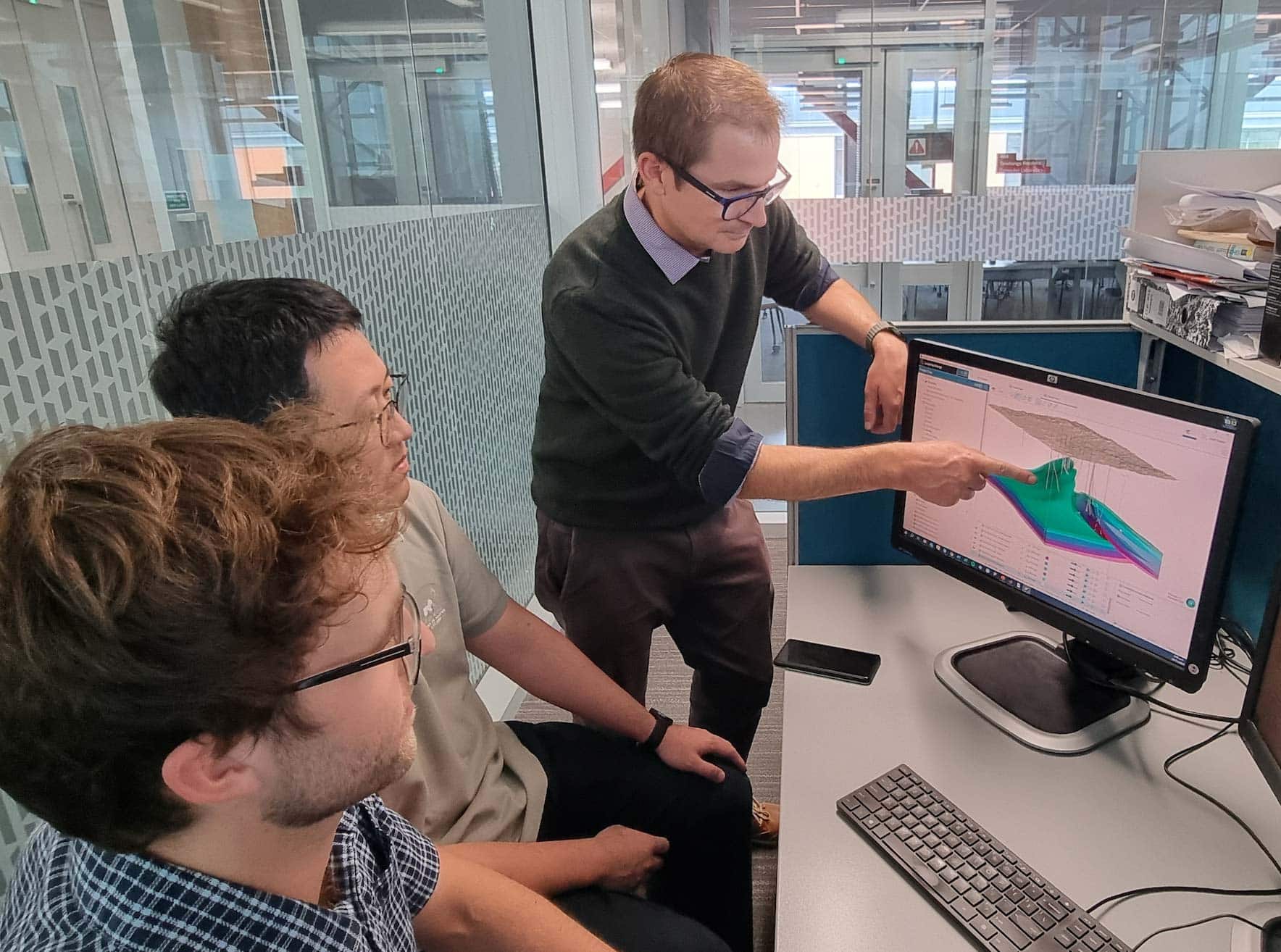As energy companies worldwide look for innovative ways to transition to more renewable, sustainable and decarbonised energy options, what part can hydrogen play? And what’s possible in hydrogen storage?
By Fiona Jeffreys
Researchers at the University of Canterbury (UC) in Christchurch, New Zealand, are conducting a 5-year project to find out more.
The team is using Seequent’s Leapfrog Energy software to create 3D models of hydrogen storage potential in depleted gas reservoirs across Taranaki. Their dynamic simulations estimate recoverable hydrogen after injection underground.
Informing commercial energy storage decisions
Energy’s big global players with core businesses traditionally in oil and gas are seeking innovative ways to transition to renewable energy sources, including new technologies that repurpose existing underground wells into geothermal energy, carbon capture, or hydrocarbon storage.
“Solving our net zero energy challenge would be easier simply using electric batteries that can be charged up to use later. But batteries have two key problems; they’re small and don’t hold their charge long enough. And while this is great for a car – it won’t get you through a cold winter,” says David Dempsey, an Associate Professor in the Civil Engineering Department, at UC.

The University of Canterbury’s David Dempsey and the team are researching the potential for underground hydrogen storage (Image: UC) as the world seeks more renewable energy solutions and sources.
Related content:
* Hydrogen’s role in the chase for net zero
* How solar power can go from massive, to modest
* India’s ambitious, world-first renewables project
When longer timeframes of readily available energy are required, alternative energy storage (such as underground reservoirs) need to be considered. Dempsey and a team that includes Matt Parker, Jinjiang Liu, and Andy Nicol are leading a pioneering research project, exploring new ways to use existing oil and gas reservoirs for renewable energy storage, such as hydrogen.
More specifically, they are interested in the performance and risk management of hydrogen stored long-term in underground reservoirs.
“Injecting and recovering hydrogen from depleted gas fields could provide New Zealand and other countries access to enormous pore volumes to help realise global hydrogen ambitions, but it comes with major challenges,” says Dempsey.
The team has been using the 3D geological modelling tool, Leapfrog Energy to interpret and share their hydrogen research findings with academic and industry leaders worldwide.

Watch: a reservoir simulation with one of the geological models developed into a block model. (Credit: UC)
The complexities of storing hydrogen underground
Reservoirs can be described as large sponges full of holes that can be pumped full of hydrocarbons (such as natural gas) to make a “battery” to draw from when needed. The goal is to balance supply and demand, such as when energy needs spike in winter or hydro lakes are low.
“That’s how underground gas storage works. You’re either pumping it down or pulling it back up again. But because hydrocarbons, such as natural gas, are declining in popularity due to their impact on carbon emissions, hydrogen has emerged as a possible option,” says Dempsey.
The team’s pilot research focuses on the potential for hydrogen storage. But it’s a complex task. Extracting hydrogen requires a lot of energy and comes with storage risks because of its high volatility.
“Compared to natural gas, storing hydrogen underground is tricky because it requires four times the rock volume to store the same energy, it’s more reactive with the geology and microbes love to consume it,” he explains.
Given hydrogen geo-storage is already challenging, the easiest place to start research is with a depleted gas field (originally holding a natural gas deposit) with a secure top seal that has sat tight for millions of years.
“Hydrogen is buoyant and much like a hydrogen balloon floats to the ceiling this gas tends to rise when stored underground. The depleted gas field we are modelling has a 300-metre thick marine mudstone top seal, so nature has provided us with perfect conditions for our research,” says Dempsey.

Watch: Injecting hydrogen (orange) into a methane reservoir (purple), its recovery, and the possibility of leaving some behind. (Credit: UC)
The value of 3D models to visualise the geology
“To assess risk and help determine if the storage site can effectively deliver hydrogen, it’s crucial to create a geological model,” says Matt Parker, Research Associate at the School of Earth and Environment, at UC.
“What we want to understand is how quickly you can put hydrogen in and get it back out again. And this requires understanding the geometry to better predict reservoir performance, optimise operations, measure storage size and any potential loss points,” says Parker.
Leapfrog Energy has enabled the team to slice through their 3D geological model, incorporate wells, a fault system, visualise the reservoir’s offset and study the displacement of natural gas by injected hydrogen.
Together with Jinjiang Liu and Andy Nicol’s expertise, the 3D geological models were then exported to a reservoir simulator. And in a final step, the simulator results are reimported back into the software for visualisation.
“In the future, we plan to use 2D seismic profiles as constraints for our reservoir geometry and to add more complexity to our models,” says Parker.

Watch: Saturation isosurfaces show numerical models used to create isosurfaces for reservoir fluids. (Credit: UC)
Repurposing the existing wells for hydrogen storage
Determining if fields can be repurposed to be more CO2-friendly could also have significant commercial benefits.
“Oil and gas companies have invested vast resources into drilling wells and conducting extensive characterisation. As a result, there is already a substantial amount of data and information available to work with,” says Dempsey.
“And, although some well retrofitting would be required (hydrogen can embrittle steel at high pressures) this may be less expensive than drilling new wells and could help to save tens of millions of dollars.”
Repurposing and retrofitting wells could also help energy professionals transition to a more environmentally friendly career.
“We’ve got talented people in Taranaki and across the global energy industry looking to their future. It’s exciting to consider how to use innovative technologies to repurpose the existing energy infrastructure already in place,” says Dempsey.





